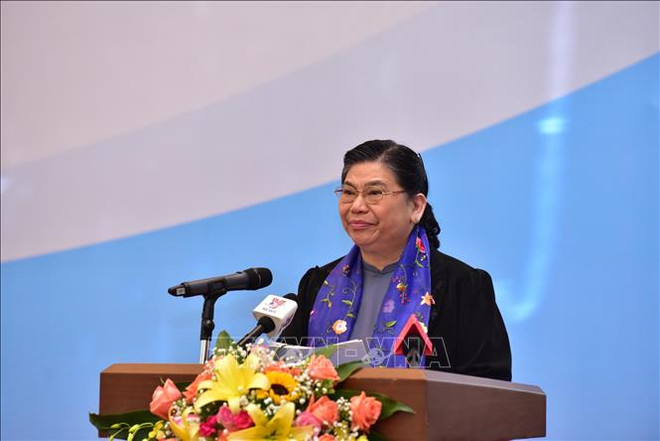 Chairwoman of the National Assembly Tong Thi Phong speaks at the conference on comprehensive development policy for children in Hanoi on November 23. (Photo: VNA)
Chairwoman of the National Assembly Tong Thi Phong speaks at the conference on comprehensive development policy for children in Hanoi on November 23. (Photo: VNA)Hanoi (VNA) – It is crucial to incorporate theenforcement of child rights into socio-economic plans and State budgetallocation, particularly in the next five years, ViceChairwoman of the National Assembly Tong Thi Phong said at a conference on November 23.
Vietnam has taken specificaction programmes to prevent children from being exploited, sexually abused andtrafficked and to help them stay away from drugs and crime, she told theconference on comprehensive development policy for children in Hanoi.
Vietnam has multiple legal provisions and provides special care to protectrights of vulnerable children such as orphans, abandoned children, homelesschildren, children with disabilities and those with HIV, she said.
Phong also emphasised theneed to clearly identify the shortcomings and the causes of the shortcomings inenforcing the rights of children and seek solutions to tackle these issues.
Vietnam needs to adoptcomprehensive development polices for children aged 0 – 8 and improve legalsystems and policies relating juveniles, she added.
Vietnam was the first country in Asia and the secondin the world to ratify the International Convention on the Rights of the Child, said Chief Representative of the United Nations Children’s Fund(UNICEF) in Vietnam Rana Flowers.
Vietnam can beproud of what the nation has achieved in enforcing children’s rights, notablyincorporating the convention’s provisions and principles into the nationallaws, policies and programmes, Flowers said.
Over threedecades after the convention was ratified, Vietnam has made many achievementsin promoting and protecting the rights of children, she noted.
The conference was heldby the NA’s Committee for Culture, Education, Youth and Children; theMinistry of Labour, Invalids and Social Affairs – the leading agency forchild issues; and the UNICEF.
The conference took placeas Asia-Pacific countries preparing for the Asia-Pacific Regional Conferenceon Early Childhood Development in Hanoi from December 4 – 6.
Itaimed toraise awareness among policy makers of the threats to youngchildren’s present and future environments, as well as opportunities to protectthese environments./.



























